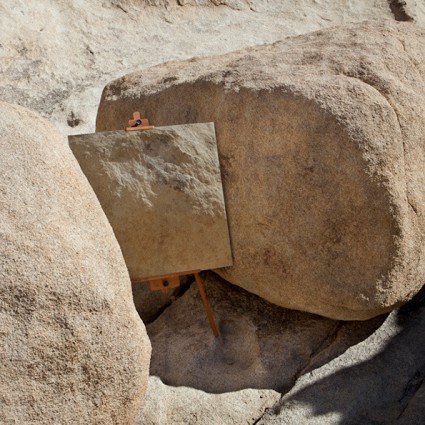
For nearly a month, Brooklyn-based photographer, Daniel Kukla, set up camp in a cabin in Joshua Tree National Forest. He ventured out everyday at dusk or dawn carrying a camera, large mirror and painter’s easel to capture the human, environmental and geologic elements that give the park its variety and vitality. The result is one landscape mirrored onto the backdrop of another, creating two opposing scenes in a single visual pane, called ‘The Edge Effect’.
The use of mirrors in his project was inspired by hours spent in his rental car – noticing differences between his view through the windshield and the one caught in his rear- or side-view mirrors.
“As you drive through the park, you’re surrounded by impressive landscapes on all sides, but the view differs depending on which direction you look. At dusk, all I could see in front of me was a dark night falling, but the rear-view mirror still held a beautiful sunset.” – Daniel Kukla
“Using a single visual plane, this series of images unifies the play of temporal phenomena, contrasts of color and texture, and natural interactions of the environment itself.” – Daniel Kukla
“The ‘edge effect’ is an ecological term that describes the juxtaposition of two contrasting environments. It refers to a transition zone, a dynamic area where species mix, and some things live while others die out.” – Daniel Kukla
All images © Dan Kukla
[via New York Times]